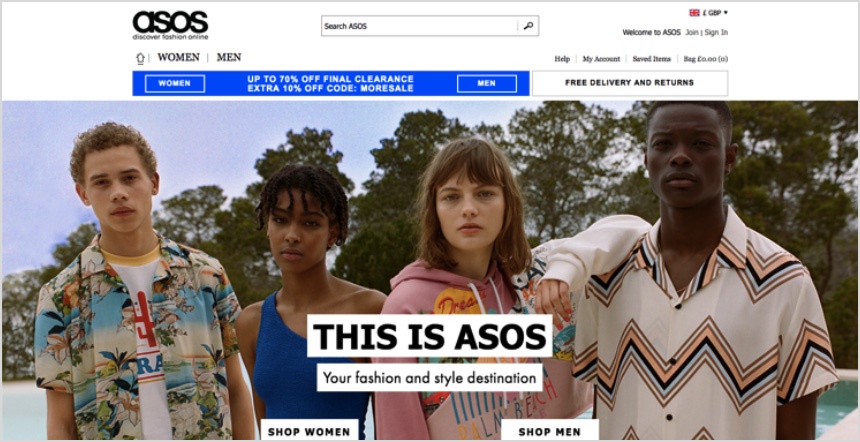
Table of Contents
What is Remarketing & How Does It Work?
Simply put, Remarketing (also known as ‘Retargeting’) is a way for digital marketers to reconnect with potential customers who have previously engaged with your brand in a meaningful way, but did not convert into a customer (e.g. made a purchase, etc).
There are 2 main types: static and dynamic remarketing.

The most common usage of dynamic remarketing is on e-commerce sites. Take RedMart for example. If a user adds several products into his e-cart but does not proceed to checkout, you can set remarketing to activate automatically.
This is how it works.
When a user leaves RedMart.com and moves on to browsing Facebook on his phone/desktop, he’ll start to see RedMart’s remarketing ads on his newsfeed. These sponsored ads usually show the products he’s browsed before and added into his e-cart, reminding him to go back to RedMart’s website to complete the purchase. Brands can also include a limited-time-only promo code to sweeten the deal and create a sense of urgency.
Let’s assume that the user ignored these Facebook ads and moves on to read an article on StraitsTimes.com instead. And lo and behold, there are the RedMart ads again! As expected, RedMart is also running remarketing on Google Display Network on StraitsTimes.com, which is a part of the advertising network.


Note: You can test this out yourself. Go to RedMart.com, browse, add products to your cart and leave. Just don’t click on the ads when you start seeing them (unless you’re really buying!) as it will cost RedMart advertising money, and that’s not very nice.
Static remarketing, however, will show the same ads without considering what the audience browsed on the website.
But How Did Google/Facebook Know?

Tracking codes, such as Facebook’s “Pixel” and Google’s Remarketing/Analytics Tags are usually implemented on the website (in our example, RedMart.com) by the webmaster to track visitors for retargeting and other purposes.
In layman’s term, whenever you visit a website, a “cookie” will be given by the website to your web browser. This will essentially “tag” you as someone who has visited a specific website. By clearing your web browser’s cookies regularly, you can stop websites from tracking your behaviour.
But cookies have seen an increase in their sophistication, and clearing your browser cookies may no longer be enough. This can be seen from an announcement by Google that they now support cross-device tracking. This means that if you visited a website/app using your mobile device, you can still see remarketing ads when you are using another device (e.g. desktop) if both devices are logged into the same Gmail/Facebook account.
Sounds disturbing? Well, if it is free, you are the product.
So How Effective is Remarketing?
Remarketing is generally regarded by industry professionals as being more effective than non-remarketing campaigns. So much so that remarketing is almost a must-have in any digital marketing plan. Results can differ from case to case, but here are some interesting case studies:
1) WatchFinder (Source)
WatchFinder is a U.K. retailer of premium, pre-owned watches. The company, with an annual sale of over £25 million, started out as an online-only store but has recently opened a physical store in the London Royal Exchange. Due to the high price of the watches (averaging £3,500), less than 1% of site visitors made a purchase on their first visit.

In preparation for launching a remarketing campaign, WatchFinder created 20 lists of visitors based on location, language, and on-site behaviour (e.g. brands of watches browsed, average time on site, etc). WatchFinder then launched display ads specially tailored to each list.
For example, if you are from France and browsed Omega watches, you will be shown ads featuring Omega watches in French and be directed to the Omega page on the French website upon clicking them.
The result is a return on investment of 1,300%, as well as an increase in the average order value by 13%. When compared to the standard search campaigns, the remarketing campaigns have a 34% lower Cost-Per-Acquisition (CPA).
2) Campmor (Source)

Campmor is a retailer of camping and outdoor equipment based in the US, with 75% of their business coming from their website. With over several thousand SKUs, they had to implement Dynamic Remarketing (similar to our RedMart example earlier) to efficiently run remarketing campaigns for its products. These ads are dynamically tailored to each person based on the pages or products they previously viewed on Campmor’s site.
For example, someone who viewed men’s walking shoes might see a dynamically customised ad featuring a pair of men’s walking shoes and other related, recommended shoes. It is similar to what RedMart.com is using in our example earlier.
Dynamic Remarketing achieved 13% higher ROI and 16% higher conversion rate. Cost-per-conversion was also 37% lower with Dynamic Remarketing, and click-through rate was 300% higher than static Remarketing ads.
3) ASOS (Source)
Since the previous examples were for Google remarketing, let’s now look at how you can make it work on Facebook as well.

What ASOS used was a carousel ad that would change content according to what products a customer had browsed previously on their website. The results?
- 35% more people reached
- 300% increase in orders
- 250% increase in return on ad spend
Great results!

So How Do I Implement Remarketing?
While remarketing is one of the most powerful tools at a digital marketer’s disposal, it is also one of the hardest to implement effectively. While static remarketing ads are easy to set up by creating audiences via Facebook Pixel and/or linking Google Analytics to Google AdWords, Dynamic Remarketing is a whole different ball-game.
As the difficulty of the implementation process can differ greatly depending on the e-commerce Content Management System (CMS) that your website is currently using, we recommend the following CMS if you are just starting out
- WooCommerce
- Shopify
- PrestaShop
We also recommend working with a Google certified digital marketer to implement dynamic remarketing on the Google Display Network and/or a Facebook Certified Professional to implement dynamic retargeting on Facebook and its ad networks.
We hope that you have found this article useful. And as usual, never stop optimizing!

